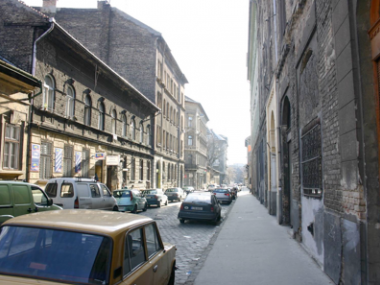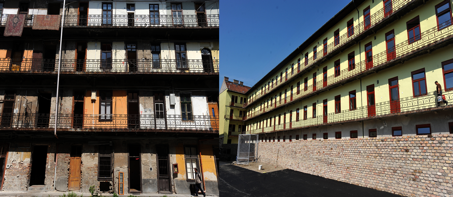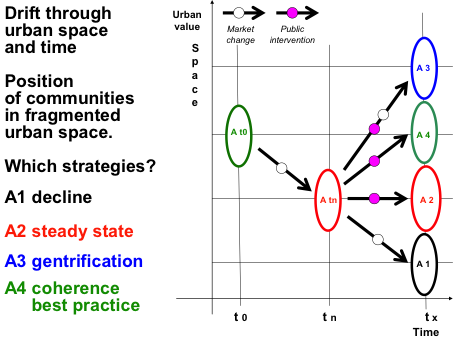The trade-off between environmental and social sustainability
Edited on
22 July 2015It is easy (and unfortunately quite usual) to consider environmental issues in their own, separated from all other considerations. This way of thinking is particularly dominating in local municipalities where the different sectorial departments work in isolation from each other. The following example, however, shows that environmental interventions might have unwanted social consequences even if planned carefully, in multi-disciplinary way.

The case of the social renewal programme of the deprived Magdolna quarter of Budapest is extensively described and analysed, see e.g. http://ec.europa.eu/regional_policy/sources/docgener/studies/pdf/50_projects/urban_dev_erdf50.pdf (p.39) and in more details http://www.aeidl.eu/en/projects/territorial-development/urban-development/urban-projects/neighbourhood-renovation-boosts-community-spirit-in-magdolna.html. The picture illustrates how dilapidated this area of Budapest is.

Photo by Iván Tosics
The following case was told to me by György Alföldi, the director of the multi-disciplinary RÉV8 management company (www.rev8.hu) which had the overall responsibility of planning the regeneration interventions.
In the second phase of the Magdolna programme EU Cohesion Fund sources arrived to the area which made it possible to deal with some of the most dilapidated buildings. One of these was built in 1890, containing 40 social rental flats with 37sqm average floorspace, having no water inside the flats. The left side of the picture shows how dilapidated the building was. When the renewal of this local government owned building was decided, the families were temporarily moved to other flats and could return after the renewal finished. All the flats got water and sewage connections and even small toilet/shower facilities were installed (although the floorspace of the flats did not change). The right side of the picture shows the renovated building.

Picture taken by RÉV8
To the greatest surprise of the management company this huge (and costly) improvement of living conditions was not well-received by the original tenants: most of them was reluctant to move back into their upgraded flat. The reason was very simple: under the new conditions these very poor families are obliged to pay 2-3 times higher rent and also their utility payments increased with their new duty to pay water and sewage fee. All this—in the lack of a generous social housing allowance system—creates financial difficulties in the stretched family budgets.
This example clearly shows that the upgrading of the physical conditions of living has to go hand-in-hand with social considerations. In a ‘best case scenario’ the social safety net covers the increase of costs for the poorest tenants. However, if such social safety net does not exist, the increase of costs leads to change in the composition of the residents as the poorest families have to leave the improved housing area.
To generalise the lesson learnt from this case it is worth to take a look on the following picture.

Picture by Claude Jacquier
The graph of Claude Jacquier shows that in the process of deterioration of a building (sinking urban value as time flows) in any given moment there are different options available for renewal interventions. With minimal investments further deterioration can be stopped (A2 ‘steady state’), while with very costly investments the building can be brought to the highest standards (A3 ‘gentrification’). The most difficult is to find that level of investment which can be considered as the best balance between the physical and social considerations (A2 ‘coherent best practice’). The general rule is that the higher you go with renovation, the less is the chance to keep the original residents. This rule can be broken by social benefit systems, allowing with increased housing allowances for poor families to stay in their building even after improvement.
The case of Magdolna shows that local actions have their limits in socially less conscious and relatively poorer countries: even the best aimed social renewal can only achieve limited success if the social safety net is not following the increase of housing costs of the original residents.
 Submitted by ivan.tosics on
Submitted by ivan.tosics on




